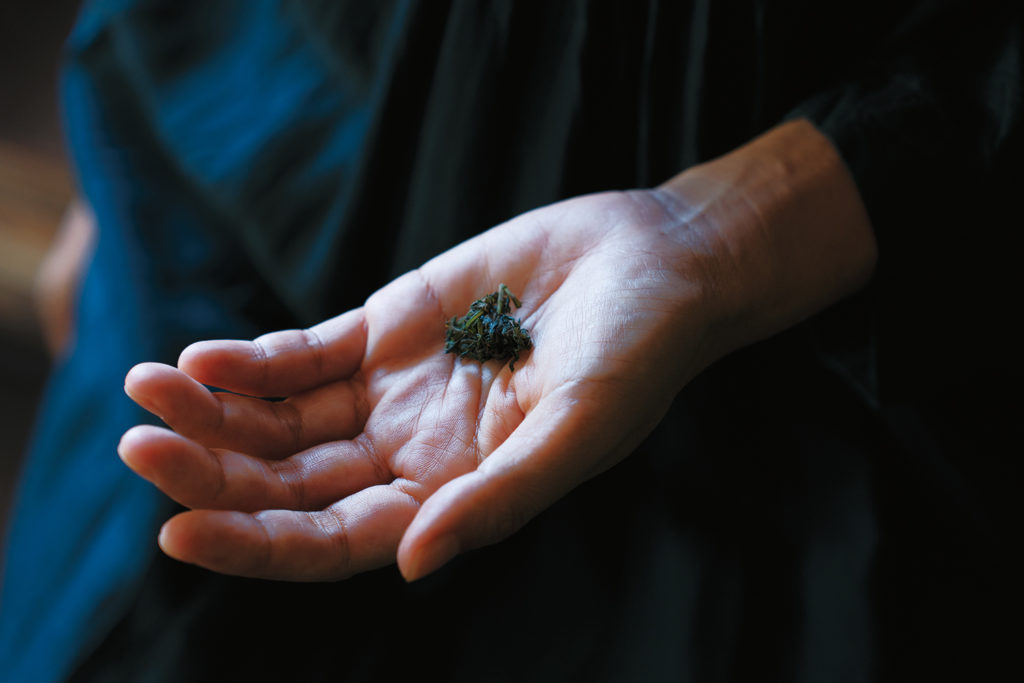
Power born of the earth
Mugwort is a traditional native plant of Japan and thus has a natural affinity with our bodies. It’s such a wonderfully powerful plant that it has long been known as a cure-all medicinal herb.
Here, let’s shine the spotlight on mugwort’s detoxifying and blood purifying properties. The leaves contain dietary fibers and minerals that are said to relieve constipation and flush out toxins. The leaves cleanse the blood and increase the blood flow to promote circulation. In traditional Chinese medicine, mugwort leaves are said to warm the Liver, Spleen, and Kidney, and are therefore used to improve the body constitution of patients with cold sensitivity. What’s more, the dark green leaves contain lots of chlorophyll, which promotes the formation of new blood cells. In short, mugwort is a magic herb with all kinds of benefits for the base of our health—blood.
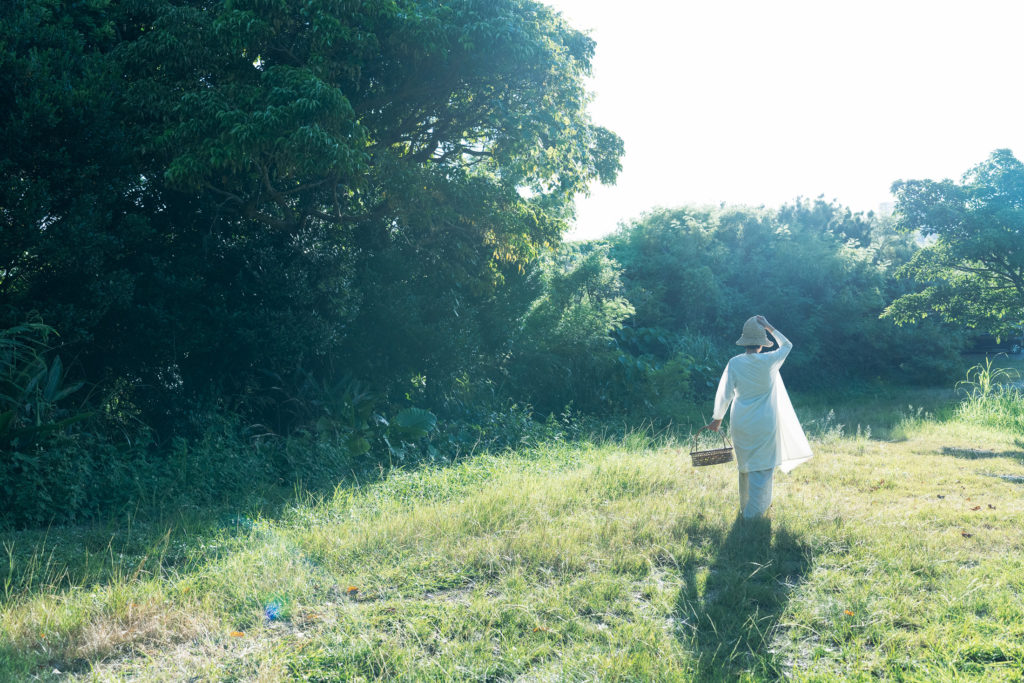
Mugwort is also known for balancing female hormones to alleviate menstrual and menopausal symptoms, and to brighten up the complexion. And cineole, responsible for the aroma of mugwort, relaxes the nerves. What a welcome, powerful herb for us today with busy lives overloaded with information.
Mugwort can be eaten as a vegetable, drunk as a tea, and even used as a dye. The extract can be diluted with a carrier oil or alcohol to make necessities like lotion, soap, and massage oil. Talk about dependable!
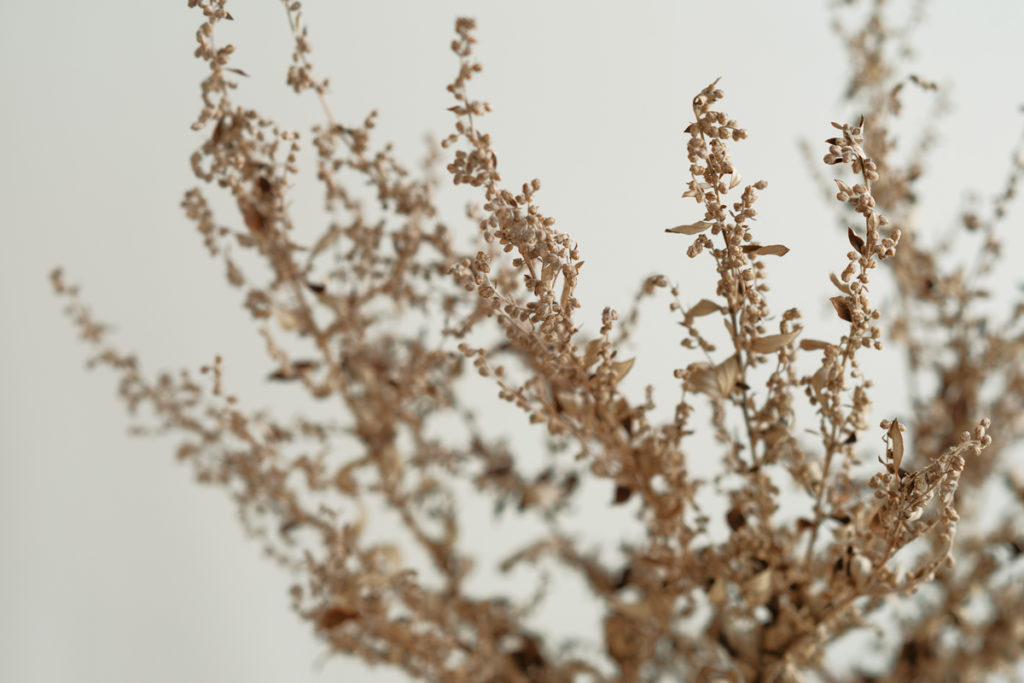
Having watched over and worked with mugwort for a long time, I’m concerned that the unique, refreshing scent of mugwort is getting weaker every year. Quite often, I find mugwort growing in today’s modern cities that has all but lost its smell completely. A loss of aroma means a loss of effective components. We humans rely on the power of nature—we can’t afford to lose it. To prevent losing the power born of the earth, we need to attune our own lives to the cycle of life. So let’s try this. We can take the power of plants, but then let’s give back that much to its rightful place in the earth.
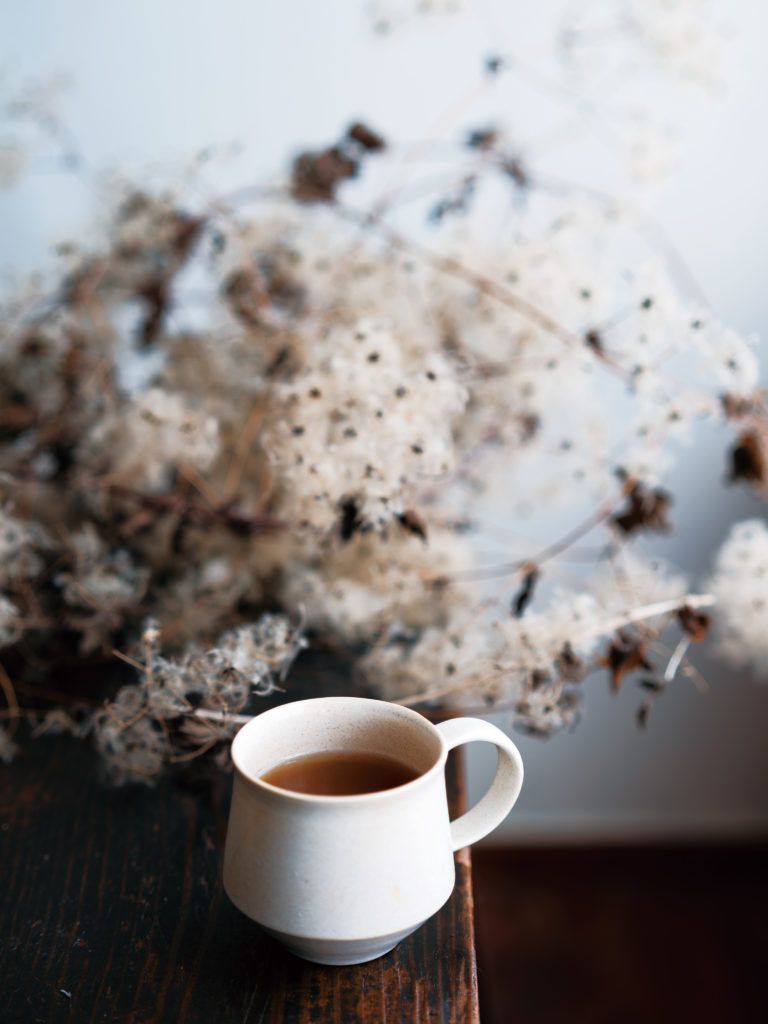
■Grass on the Plate Recipe 06
Mugwort cordial
Ingredients
30 g fresh mugwort
3 slices ginger
Cinnamon sticks for flavor
300 cc water
50 g cane sugar
Shikuwasa lime (or other citrus fruit, e.g. lemon)
Directions
1. Place the whole mugwort (from the roots up) in boiling water. Add the ginger and cinnamon sticks and boil down for 5 minutes.
2. Remove 1 and filter through a cloth. Warm over low heat while adding the cane sugar and stir until melted.
3. Dilute 2 with hot water at a ratio of 1:2, and finish with the fresh scent of squeezed citrus fruit.
■Plants Index
Weeds in this story
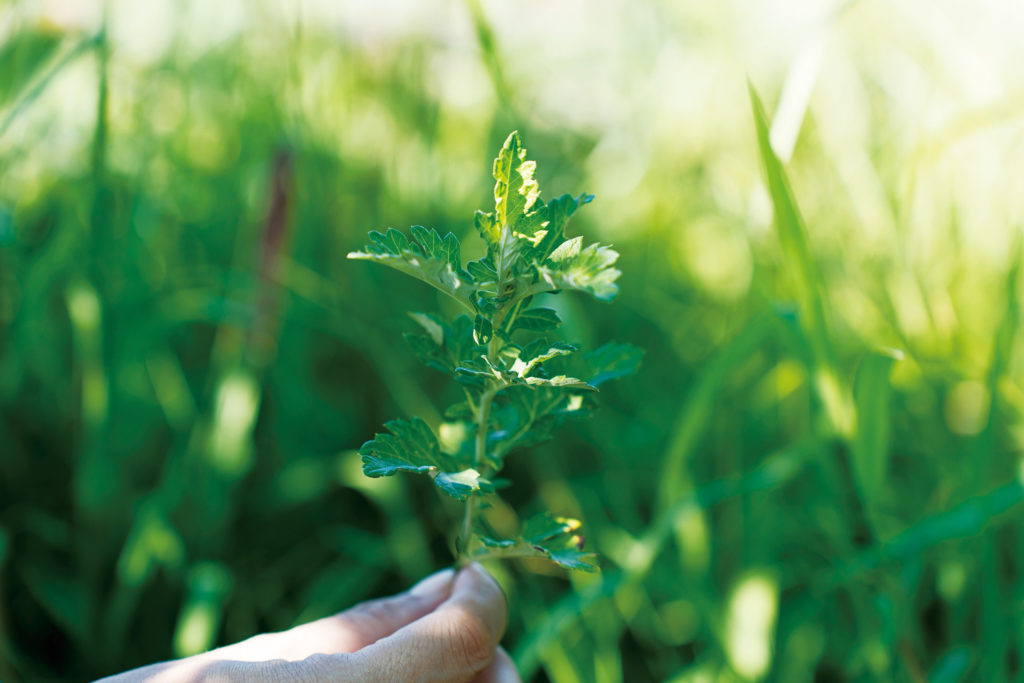
Mugwort has long been prized as a cure-all medicinal herb. The 30 or so varieties native to Japan grow in sunny areas like riverbeds, fields, and gardens. The young leaves in spring make delicious kusa-mochi sweets.
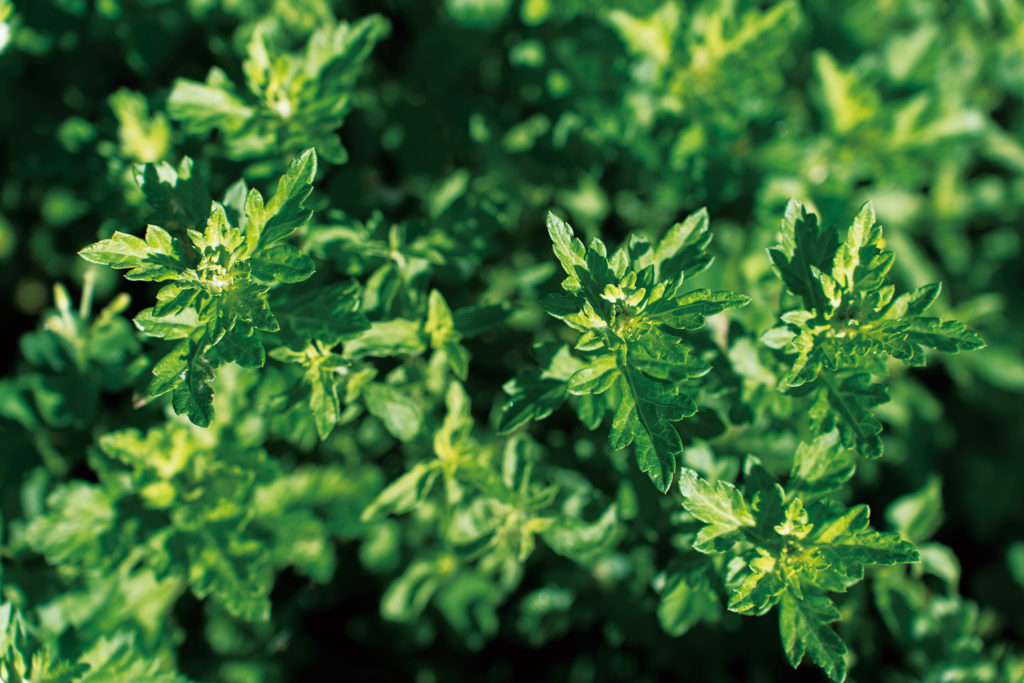
With wonderful antibacterial properties and effective at stopping bleeding, the leaves can be used to treat cuts and scratches. Select fully grown, dark green leaves, and then simply grind and apply the extracted juice. This also helps to speed up recovery.
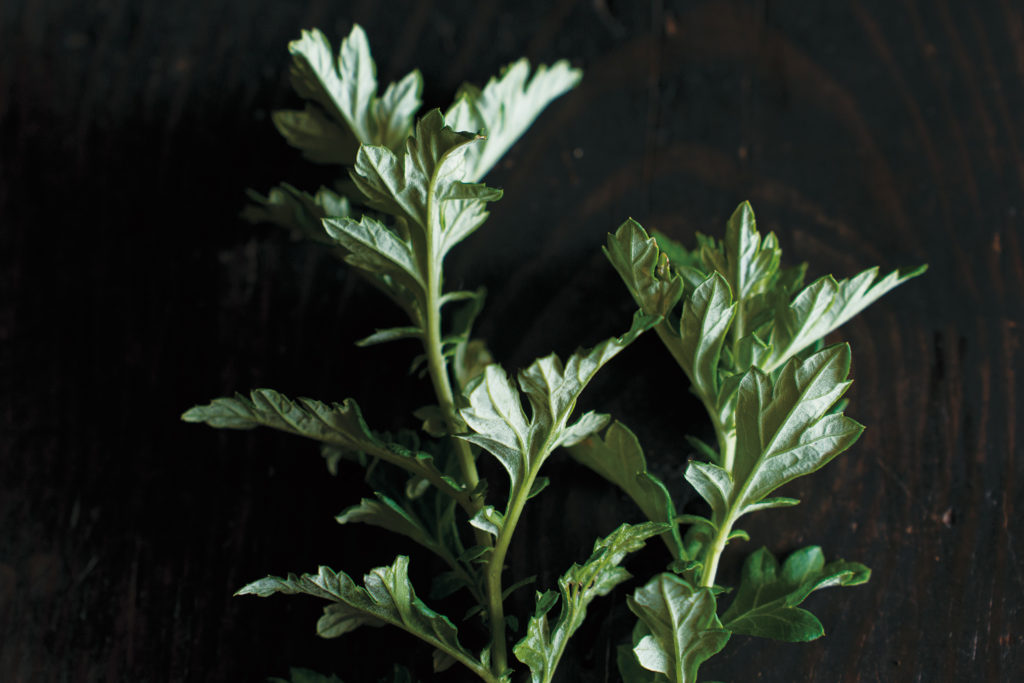
Because they burn slowly at low temperatures, the soft white hairs growing on the underside of the leaves are used to make moxa, used for moxibustion. The leaves are picked and dried at the end of the rainy season, and the moxa is produced when the humidity drops in winter.
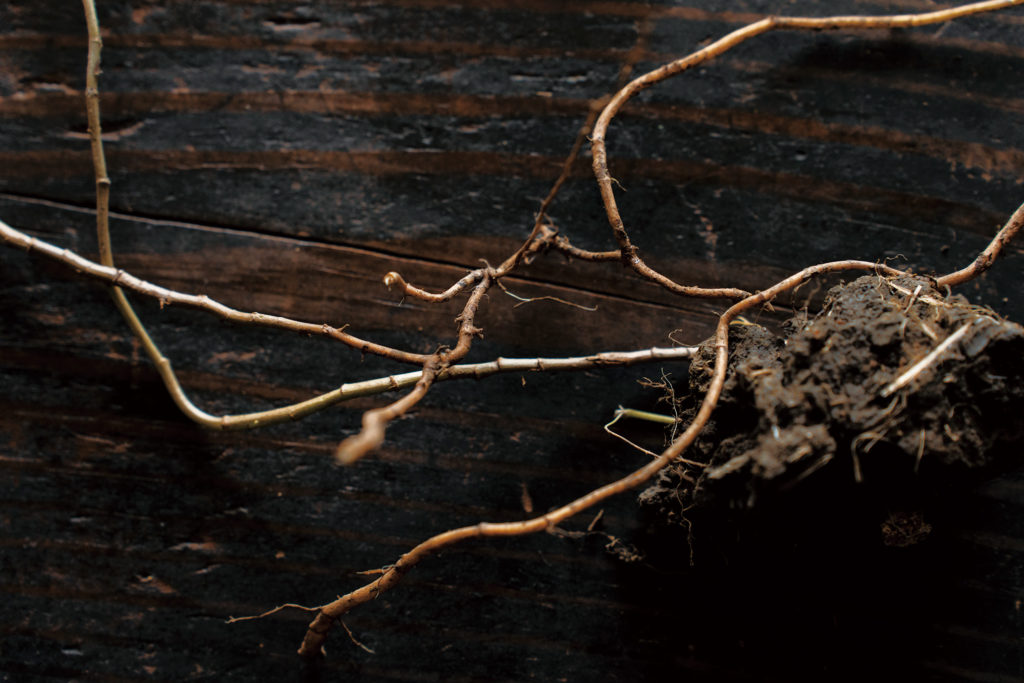
Mugwort is a perennial plant. Although the portion above ground wilts and dies in the winter, the root remains alive and grows back in the spring. Find and make a note of the places near you where mugwort grows. The list will come in handy every year.
Yoco Kawashima
Guided by childhood memories of her love for “weeds,” Yoco Kawashima began artistic activities focused on weeds in 2000, traveling to seek knowledge and wisdom, and sharing what she learned in lessons and retreats. In 2022, she launched her REAL PLANTS line of products, and is currently offering the cleansing experience of Yomogi Salt. Publications include Ari-no-mama ikiru (Come As You Are; Lingkaran Books) and Bhutan ga oshiete kureta koto(Lessons from Bhutan; Anonima Studio). Kawashima lives in Okinawa Prefecture.











